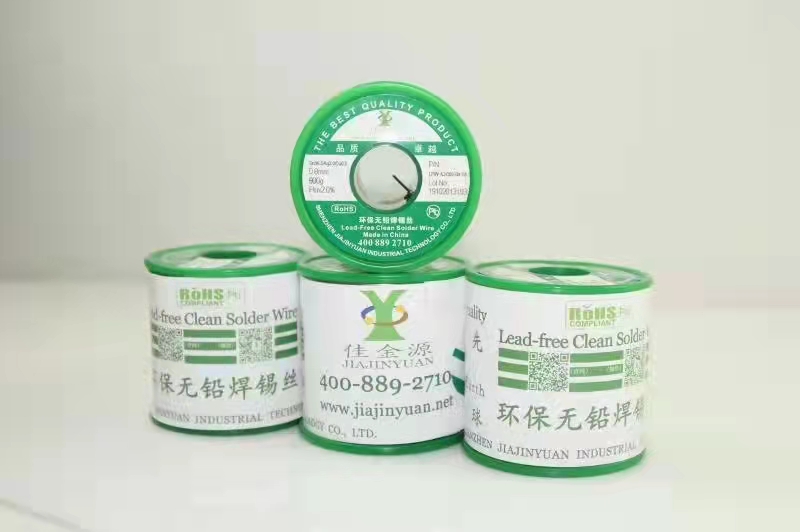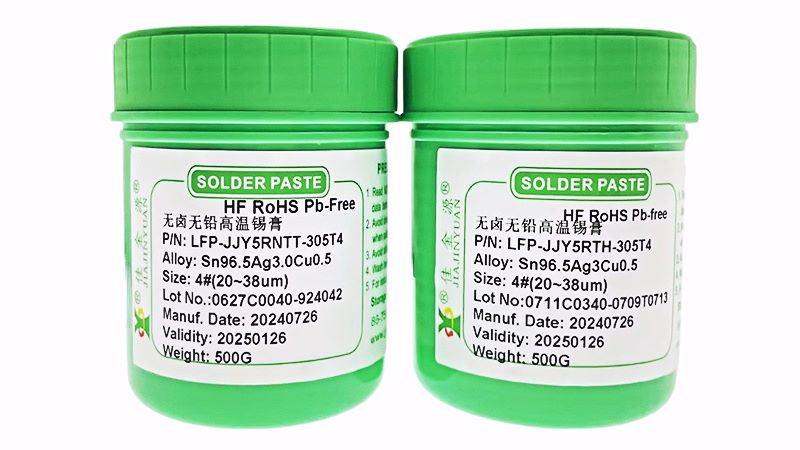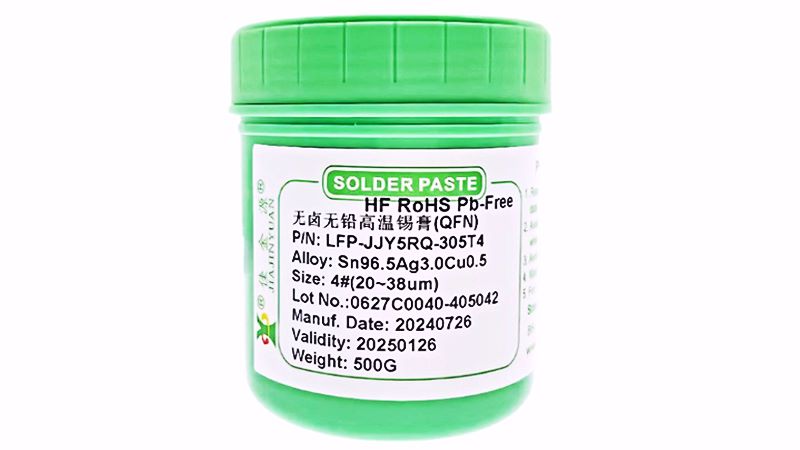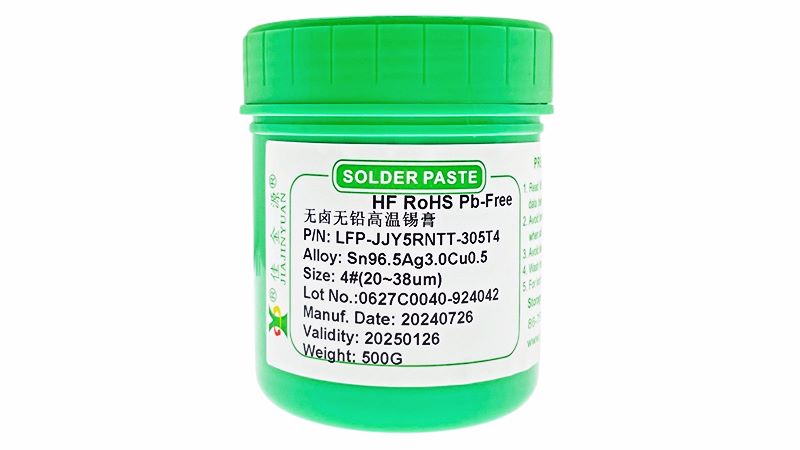Nowadays, the electronics industry is developing at an increasingly rapid pace. The rise of many industries has also led to a saturation in the market. Just like in many industries, soldering is an indispensable part. Solder wire is widely used in society and has too many classifications. People don't know how to choose the right solder wire. Some people are even more confident that the higher the solder content of the solder wire, the better it is for soldering. This is actually a misunderstanding. Now, let's talk about JJYSolder paste manufacturerLet me introduce the situation to everyone:

I believe everyone knows that tin wire is divided into leaded tin wire and lead-free tin wire. But have you noticed that among the leaded tin wire we use, only the good ones are63De-tin wire. Except for this one63Except for the tin wire, the degrees of all other tin wires are the same5A multiple of. Why?63The tin wire is not set to65What about the degree? Why is there no ratio?63What about lead-tin wires with higher degrees? For example70Degree of ,75Degree of ,80Degree, etc.
In fact, the truth is like this:63The tin wire of high temperature is a good ratio of lead and tin, and its melting point reaches a relatively low level183℃. And why is there no comparison63What about lead-tin wires with higher degrees? This problem is much simpler because the price of tin is much higher than that of lead.63The degree is already so good. The higher-grade tin wire is not only expensive but also not available63It's really useful.
When choosing solder wire, one should be meticulous and careful so as to purchase a well-deserved good product. First of all, when we choose solder wire, it is best to purchase it directly from the manufacturer. Secondly, when choosing solder wire, pay attention to its packaging. Although exquisite packaging does not indicate anything, any solder wire produced by a standardized manufacturer will be marked on the product packaging. And if any quality problems occur after purchase, you can find the manufacturer for replacement. Then, when making a purchase, one should make a reasonable choice based on their own practical situation. Many brothers like to buy from electronic cities or hardware tool stores because the local products there are relatively cheap. However, you get what you pay for. During the welding process, if the solder wire shows blackening at the solder joints or is not full, it is caused by the low quality of the solder wire.
Solder wire is mainly composed of two parts: tin alloy and additives. The composition of the alloy is divided into tin-lead and lead-free additives, which are evenly injected into the center of the tin alloy. The types of solder wires vary, and so do the additives used. Some additives enhance the auxiliary heat conduction of the solder wire during the soldering process, remove oxidation, reduce the surface tension of the material to be soldered, and remove oil stains from the surface of the material to be soldered, thereby increasing the soldering area. The characteristic of solder wire is that it is a tin alloy wire with a certain length and diameter, and it can be used in conjunction with soldering irons in the soldering of electronic components.
There are mainly two types of solder wires: one is leaded solder wire, and the other is lead-free solder wire. Among these two major types, there are many standards. Different standards have different melting points. If you want the solder wire to be effectively used in the welding operation, you must know the melting point of the solder wire to ensure an excellent welding effect.
Solder wireThe basic condition for welding is to melt the solder wire. The temperature required for the solid state to change to the liquid state is the melting point of the solder wire. Melting point is a physical property of a substance. The solution will also change with the variation of tin content. When the temperature required for melting does not reach its melting point, generally, when it changes from solid to liquid, the wettability and solderability will lose their effect, and then the welding requirements will not be met.
The above is an explanation of the key points for everyone. Currently, there are both silver-containing and non-silver-containing areas on the marketNo, silver-containing ones have a lower melting point first, which increases tensile strength and electrical conductivity. However, the cost is relatively high. The cost is low because they do not contain silver. Tin-copper alloy ones are generally suitable for welding and use. So, choosing a suitable product for yourself is the most important thingFor exampledoLEDLow-temperature solder paste is used, but low-temperature is not universal and is only applicable to specific products. You can contact the relevant brand, and these questions will be relatively answered.





 Tel:+86 0755 88366766
Tel:+86 0755 88366766 Phone:+86 18938660310
Phone:+86 18938660310 Email:sales@jjyhanxi.com
Email:sales@jjyhanxi.com Address:13/F,12/F, Building No. B,Qinghu Technology Park,Qingxiang Rd.,Qinghu Community, Longhua Subdistrict,Longhua District,Shenzhen City,GUANGDONG Province,P.R.C.(518027)
Address:13/F,12/F, Building No. B,Qinghu Technology Park,Qingxiang Rd.,Qinghu Community, Longhua Subdistrict,Longhua District,Shenzhen City,GUANGDONG Province,P.R.C.(518027) Guangdong Public Security Backup 44030902002666 name
Guangdong Public Security Backup 44030902002666 name
 WeChat
WeChat WeChat official account
WeChat official account
